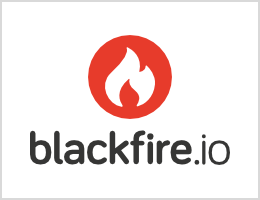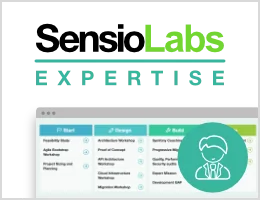The Entry Point: Helping Users Start Authentication
When an unauthenticated user tries to access a protected page, Symfony gives them a suitable response to let them start authentication (e.g. redirect to a login form or show a 401 Unauthorized HTTP response for APIs).
However sometimes, one firewall has multiple ways to authenticate (e.g. both a form login and a social login). In these cases, it is required to configure the authentication entry point.
You can configure this using the entry_point setting:
1 2 3 4 5 6 7 8 9 10 11 12 13
# config/packages/security.yaml
security:
# ...
firewalls:
main:
# allow authentication using a form or a custom authenticator
form_login: ~
custom_authenticators:
- App\Security\SocialConnectAuthenticator
# configure the form authentication as the entry point for unauthenticated users
entry_point: form_login1 2 3 4 5 6 7 8 9 10 11 12 13 14 15 16 17 18 19 20 21 22 23 24
<!-- config/packages/security.xml -->
<?xml version="1.0" encoding="UTF-8"?>
<srv:container xmlns="http://symfony.com/schema/dic/security"
xmlns:xsi="http://www.w3.org/2001/XMLSchema-instance"
xmlns:srv="http://symfony.com/schema/dic/services"
xsi:schemaLocation="http://symfony.com/schema/dic/services
https://symfony.com/schema/dic/services/services-1.0.xsd
http://symfony.com/schema/dic/security
https://symfony.com/schema/dic/security/security-1.0.xsd">
<config>
<!-- ... -->
<!-- entry-point: configure the form authentication as the entry
point for unauthenticated users -->
<firewall name="main"
entry-point="form_login"
>
<!-- allow authentication using a form or a custom authenticator -->
<form-login/>
<custom-authenticator>App\Security\SocialConnectAuthenticator</custom-authenticator>
</firewall>
</config>
</srv:container>1 2 3 4 5 6 7 8 9 10 11 12 13 14 15 16 17 18
// config/packages/security.php
use App\Security\SocialConnectAuthenticator;
use Symfony\Config\SecurityConfig;
return static function (SecurityConfig $security): void {
$security->enableAuthenticatorManager(true);
// ....
// allow authentication using a form or HTTP basic
$mainFirewall = $security->firewall('main');
$mainFirewall
->formLogin()
->customAuthenticators([SocialConnectAuthenticator::class])
// configure the form authentication as the entry point for unauthenticated users
->entryPoint('form_login');
;
};Note
You can also create your own authentication entry point by creating a
class that implements
AuthenticationEntryPointInterface.
You can then set entry_point to the service id (e.g.
entry_point: App\Security\CustomEntryPoint)
Multiple Authenticators with Separate Entry Points
However, there are use cases where you have authenticators that protect different parts of your application. For example, you have a login form that protects the main website and API end-points used by external parties protected by API keys.
As you can only configure one entry point per firewall, the solution is to split the configuration into two separate firewalls:
1 2 3 4 5 6 7 8 9 10 11 12 13 14 15 16
# config/packages/security.yaml
security:
# ...
firewalls:
api:
pattern: ^/api/
custom_authenticators:
- App\Security\ApiTokenAuthenticator
main:
lazy: true
form_login: ~
access_control:
- { path: '^/login', roles: PUBLIC_ACCESS }
- { path: '^/api', roles: ROLE_API_USER }
- { path: '^/', roles: ROLE_USER }1 2 3 4 5 6 7 8 9 10 11 12 13 14 15 16 17 18 19 20 21 22 23 24 25
<!-- config/packages/security.xml -->
<?xml version="1.0" encoding="UTF-8" ?>
<srv:container xmlns="http://symfony.com/schema/dic/security"
xmlns:xsi="http://www.w3.org/2001/XMLSchema-instance"
xmlns:srv="http://symfony.com/schema/dic/services"
xsi:schemaLocation="http://symfony.com/schema/dic/services
https://symfony.com/schema/dic/services/services-1.0.xsd
http://symfony.com/schema/dic/security
https://symfony.com/schema/dic/security/security-1.0.xsd">
<config>
<!-- ... -->
<firewall name="api" pattern="^/api/">
<custom-authenticator>App\Security\ApiTokenAuthenticator</custom-authenticator>
</firewall>
<firewall name="main" anonymous="true" lazy="true">
<form-login/>
</firewall>
<rule path="^/login" role="PUBLIC_ACCESS"/>
<rule path="^/api" role="ROLE_API_USER"/>
<rule path="^/" role="ROLE_USER"/>
</config>
</srv:container>1 2 3 4 5 6 7 8 9 10 11 12 13 14 15 16 17 18 19 20 21 22
// config/packages/security.php
use App\Security\ApiTokenAuthenticator;
use App\Security\LoginFormAuthenticator;
use Symfony\Config\SecurityConfig;
return static function (SecurityConfig $security): void {
$apiFirewall = $security->firewall('api');
$apiFirewall
->pattern('^/api')
->customAuthenticators([ApiTokenAuthenticator::class])
;
$mainFirewall = $security->firewall('main');
$mainFirewall
->lazy(true)
->formLogin();
$accessControl = $security->accessControl();
$accessControl->path('^/login')->roles(['PUBLIC_ACCESS']);
$accessControl->path('^/api')->roles(['ROLE_API_USER']);
$accessControl->path('^/')->roles(['ROLE_USER']);
};
